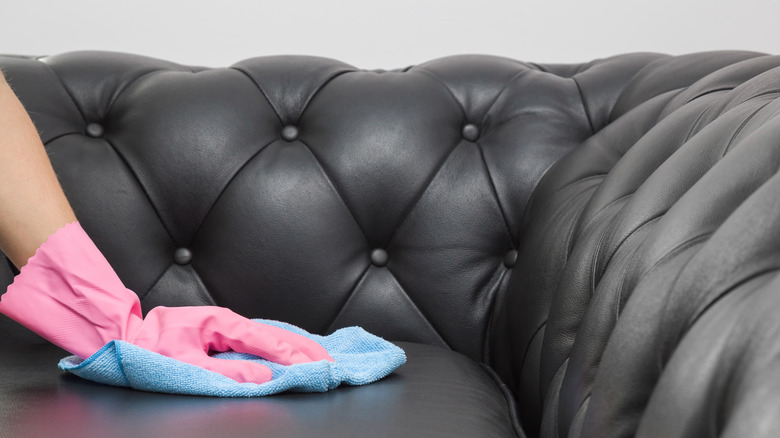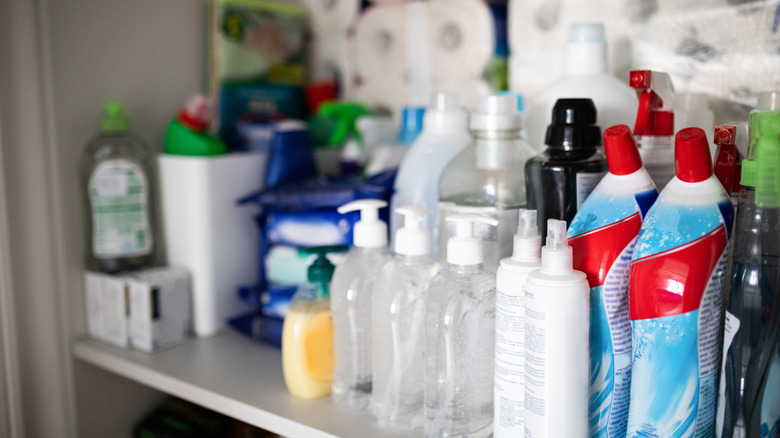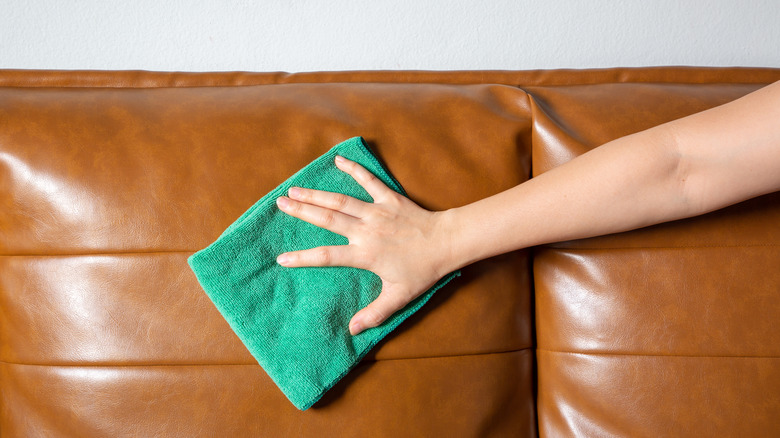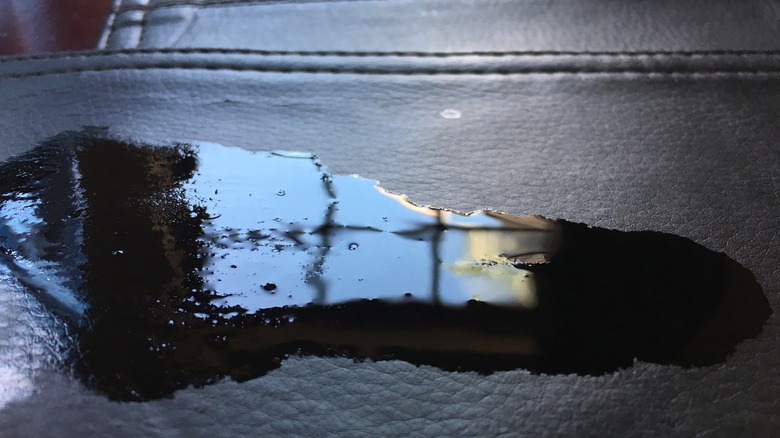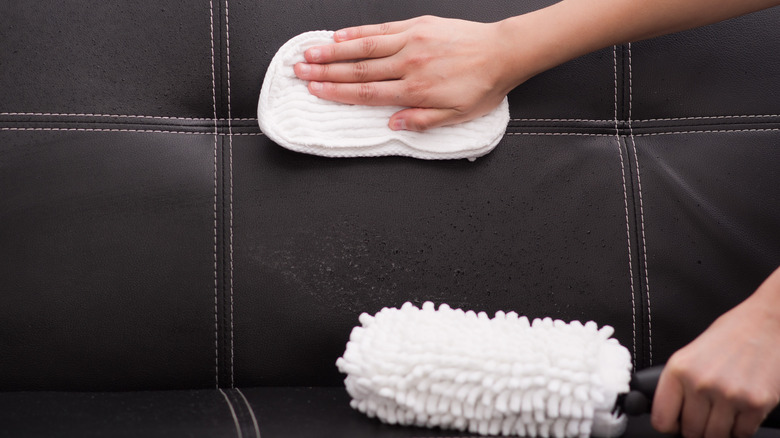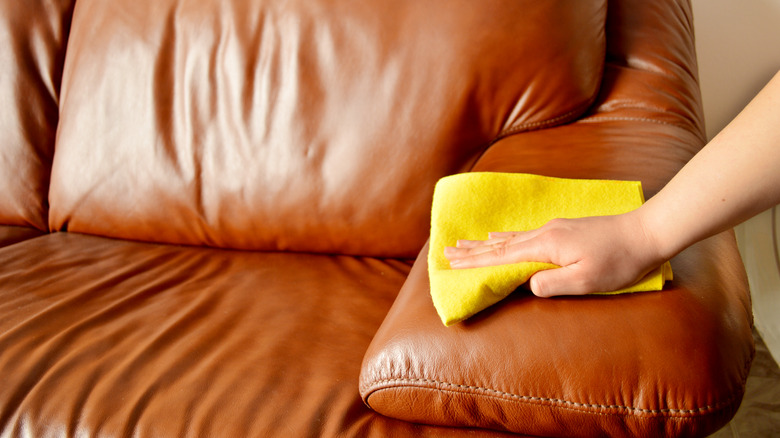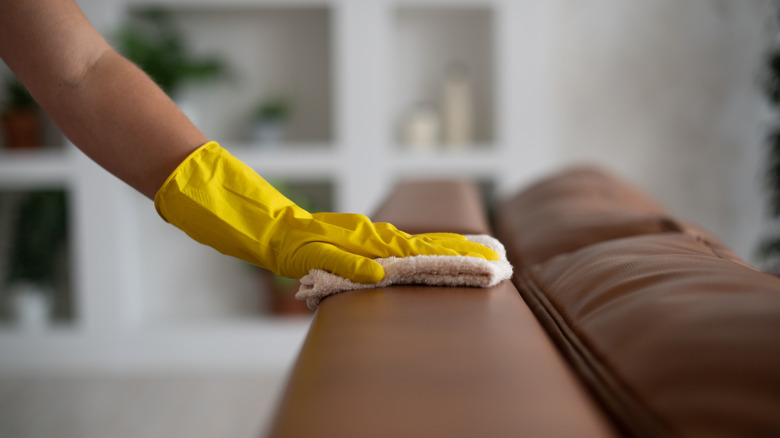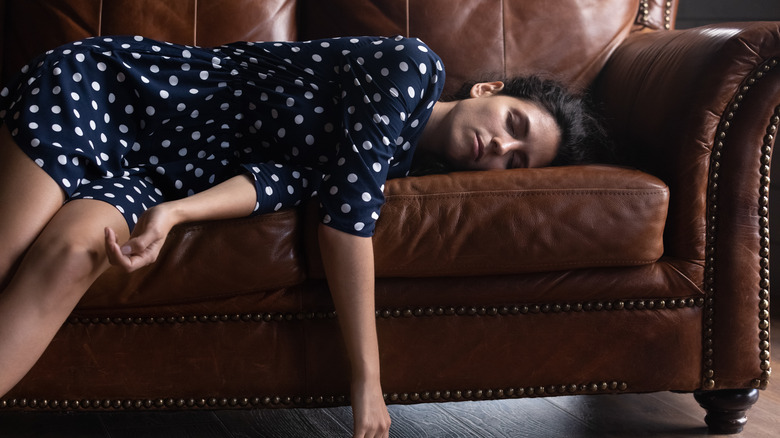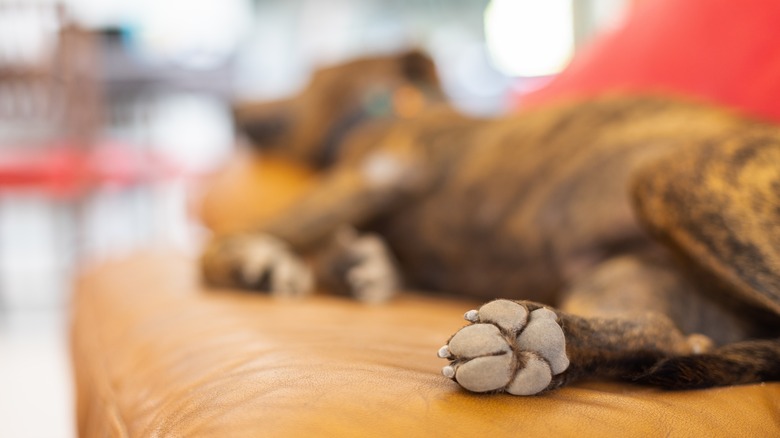Common Mistakes To Avoid When Cleaning Your Leather Furniture
Leather is regarded as the most durable of all upholstery materials. In fact, full-grain leather can stay in good shape for over a hundred years. This is one of the reasons why leather furniture tends to carry heftier price tags compared to other types, such as textiles and polyesters. To maintain its handsome look, however, leather furniture requires proper care, which starts with cleaning that is done right.
Yet, unfortunately, there are a myriad of ways you could actually be cleaning your leather furniture incorrectly. And in many cases, people commit these errors unknowingly. Unless rectified, these can result in irreparable damage to your household items. Whether it is a sofa set, a recliner, or a dining chair, your leather furniture is an investment worth protecting and caring for. If you just bought yours, then you are doing the right thing by making yourself informed from the get-go. Let's pick out the fiction from the facts to save yourself from these notorious leather furniture cleaning mistakes.
Not following (or reading) the manufacturer's instructions
The most crucial mistake owners commit is not in the actual cleaning, but in the lack of effort in understanding their furniture. We are all guilty of it at some point — no judgement here. This occurs quite often because most people presume that leather furniture is not that different from other furniture types, and that there is nothing special required to clean it. Overlooking the manufacturer's instructions tops our list because avoiding this error could spare you from a myriad of other possible mistakes.
Like in many other products, a user guide or manual should be provided when you buy your furniture. It might be in the form of a booklet or pamphlet, or sometimes it is imprinted on the packaging or sewn into the furniture itself in a discreet spot. Make sure to read its content and keep it somewhere secure so you can refer back to it when needed. You can also check the website of the furniture brand or manufacturer — some companies publish their manuals online.
Not doing research
In some cases, a user guide might not be available, such as when you purchase your item second-hand, or if you bought it from the flea market. It is also possible that some manuals do not have sufficient information on how to clean the furniture. This can lead owners to resort to unproven street-wise hacks that might be ineffective or can even cause adverse effects. Unfortunately, people often decide to do research only after an issue occurs, trying to find ways to patch it up. Remember that prevention is always better than having to find a cure.
Cleaning is about more than just the physical work. Many times, it also involves acquiring new knowledge. With or without a manufacturer's user guide, it is important to learn how to properly care for your furniture. There are readily available references on the internet — just make sure to choose recognized sources with expertise on the subject. You can also try visiting your local furniture shop or upholstery service to ask for cleaning tips.
Using the wrong cleaning products
One of the consequences of being uninformed is potentially thinking that conventional cleaning methods and tools will work similarly on leather furniture. Unlike other upholstery materials, leather is organic, making it delicate. Using common household items such as alcohol, baking soda, white vinegar, lemon, and bleach can worsen stains and cause damage. Some DIY sites on the internet even claim that stuff like window cleaners, nail polish removers, and hairspray work wonders on leather. The reality is, these chemicals are too harsh and will suck out vital moisture. They will also wash off the protective coating and dye, creating unsightly discoloration and making the leather more vulnerable.
So, what should you use? Apart from mild soap and water, the recommended cleaning aids for leather furniture are leather cleaners or leather soap. Leather cleaners are usually in liquid form, while leather soaps come in bars. These specialty products can remove dirt and stains without harming your item. Like always, read the instructions first before using them. Eucalyptus oil is an effective ingredient for cleaning leather furniture, too. For extra shine and protection, you can also apply a leather moisturizer after a thorough clean.
Not testing out a product first
Doing your research is a good start, but it pays to be extra careful. Buying a new cleaning product or discovering a new method can get you too excited to apply it right away. Keep in mind that there are always numerous factors to consider. For instance, the type of leather, its age, and even the room temperature can sometimes influence the efficacy of the product. Results are never guaranteed.
Before applying a new product or a new cleaning method for your leather furniture, it is wise to try it first on a test surface. Artists do a similar practice before smearing their canvas with paint. Ideally, you should use a separate piece of upholstery taken from the same furniture. If not, choose the least noticeable area, perhaps the back side or under the armrest, and test the solution before applying it to the rest of the furniture. You may try observing the spot for an hour up to an entire day until you are sure that the product is safe to use.
Delaying when cleaning spills
Compared to fabrics, leather is better at retaining moisture on its surface, rather than absorbing it. This is a property called adsorbency (note the spelling). This makes it less prone to stains. However, this ability is only temporary. Leather is, in fact, porous, and any liquid will surely sink into the leather if not removed right away. Still, some owners can get misled that cleaning spills can wait. If you do this, then you risk leaving unwanted marks on your prized furniture that will haunt you forever and remind you of your guilty procrastination.
It may be worth it to keep food and drinks off your couch, but sometimes that is unavoidable. The best precautionary measure is to have a clean, dry cloth on standby during activities wherein spillages are probable. And if something does trickle its way into the sofa, quickly grab the cloth and blot the spot, allowing it to absorb the substance. The longer you delay, the higher the chance of a permanent stain. It is also important not to wipe or scrub the area, as this can cause the spill to spread or scratch the leather. The trick is to be quick, but gentle at the same time.
Scrubbing too aggressively
Speaking of being gentle, another mistake people are often guilty of is being too forceful in scrubbing their leather. You might think removing sticky stains requires extra muscle power, just like when cleaning your sink or your toilet. That is not the case with leather furniture. Aggressive rubbing or brushing can fade its color and tear away bits of its outer layer. Your eyes might trick you that you are erasing stains, but the truth is you are peeling off the leather itself. Brushes that are too hard or rags that are too rough can also deface the material's natural beauty.
Cleaning dirt or caked-on substances off your leather item might need some moderate scrubbing, but whenever possible, do nothing more than blot the area, such as when treating spills. Only use brushes with soft bristles or cloths with soft fibers. You must also be careful when wiping off loose particles that can scratch the upholstery. Using a vacuum cleaner could be a safer choice for taking these out.
Cleaning with water only
How can you be wrong by using water? Doesn't almost anything that needs cleaning involve water, the universal solvent and secret to life on earth? In very small amounts, water can be helpful in cleaning your leather furniture, but use a little too much and it can ruin it instead. Dousing blemishes with water will not only damage the upholstery, it also forces the stain further into the material.
If you want to remove dust and dirt from the surface, using a damp cloth will not cause any harm. Other than that, it is best to shy away from using water on your leather furniture. And even if you do succeed in cleaning spills and residue with just water, it will not eliminate the unwanted odors they leave behind. It may be readily available and cost almost nothing, but water is not exactly leather's best friend. Again, liquid leather cleaners are the recommended alternative.
Neglecting to dust
We already know that effective cleaning requires being careful and being smart. Well, it also needs discipline. Dusting seems to be a minor thing, but that is the very reason why people forget to do it. Allowing dust to accumulate and settle on your leather makes it surprisingly difficult to remove. Dust particles can also scratch the upholstery and compromise its look. Dust is not only harmful to your couch, but also to your family, as it contains allergens and bacteria.
It is advisable to dust your leather furniture at least once a week. A microfiber will do great. If not, a soft, damp cloth can do the trick. Wipe all surfaces to reveal the material's innate shine. Make sure to also clean corners, folds, crevices, and other hard-to-reach spots. A soft-bristled vacuum cleaner would also work fine if you prefer to use one. For better results, apply a formulated leather cleaner. How often you should clean your sofa is also subject to considerations, such as environmental conditions and the traffic in your house.
Letting body oils seep in
Another cause of stains on leather furniture is body oils. The human skin produces a layer of oil called sebum, which acts like its natural moisturizer and protection. This is often overlooked and even unknown to many, but sebum can cause irreversible stains on leather if they are allowed to seep into the material. Leather can be very warm. When the skin comes in direct contact with it, our bodies secrete sweat and oil, which can settle into the upholstery's pores. If they sink too deep, they can stay there indefinitely, manifesting on the surface as smudges and dark spots.
Now, it is impossible not to touch your couch with your body. However, there are ways to prevent body oil stains. If someone plans to sleep on it or lie down for prolonged periods, you may want to cover it first with a blanket. This is particularly important because your sweat becomes more lipid during sleep and causes a buildup of oils. Throws and blankets are also a clever way of styling your leather sofa. On hot days, frequent wiping to keep the furniture dry is also a good practice.
Being careless with pets
Thanks to its durability, many experts consider full-grain leather sofas ideal for people with pets. The tough material is puncture-resistant, helping it to withstand chewing and clawing. However, our animal friends can still leave behind stuff that is not so friendly to the furniture. Fur, saliva, urine, and droppings, as well as the dirt that clings to their paws, are all part of the mess list. If you are not careful, these can have devastating consequences for your couch.
Training your pet is probably the best and most foolproof defense. You can try teaching them to stay on the floor or on their own bed, rather than on the furniture, but if being part of the family means having a spot on the couch too, then make sure to always clean up after they're on it. Having your cleaning tools readily available could be helpful, too.
